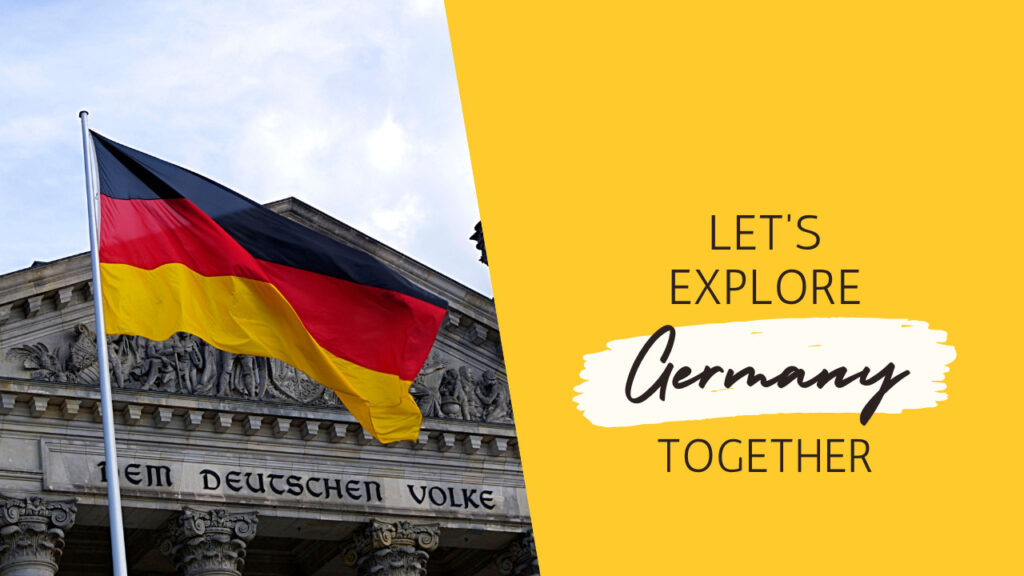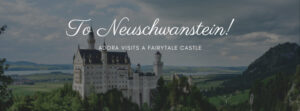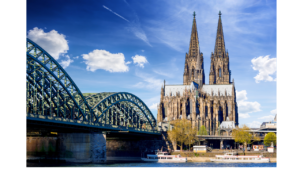
Exploring the Heart of Europe: A Journey Through Germany
Nestled in the heart of Europe lies a country rich in history, culture, and innovation: Germany. From the bustling streets of Berlin to the picturesque villages of Bavaria, Germany offers a diverse tapestry of experiences that captivate travelers from around the globe. Join me on a journey as we uncover the essence of this fascinating land.
Table of Contents
ToggleA Tapestry of History
Germany’s history is a tapestry woven with threads of triumph and tragedy. From the days of the Holy Roman Empire to the scars of World War II, Germany’s past is palpable as you walk through its cities and towns. The Berlin Wall, once a symbol of division, now stands as a reminder of unity and resilience. Visitors can explore the remnants of this barrier at the Berlin Wall Memorial, where exhibitions and memorials pay homage to those who lost their lives striving for freedom.
Cultural Kaleidoscope
Germany’s cultural landscape is as diverse as its geography. In Berlin, modern art galleries and avant-garde theaters share the stage with historic landmarks like the Brandenburg Gate and the Reichstag. Munich, the capital of Bavaria, beckons with its lively beer gardens and the majestic Neuschwanstein Castle, a fairy-tale fortress nestled in the Bavarian Alps. And let’s not forget about the vibrant festivals that punctuate the German calendar, from the world-famous Oktoberfest to the colorful Karneval celebrations in Cologne.
Culinary Delights
No visit to Germany would be complete without indulging in its culinary delights. Savor the hearty flavors of bratwurst and sauerkraut at a traditional beer hall, or treat your taste buds to the delicate nuances of regional specialties like Swabian Maultaschen or Franconian Schäufele. And of course, no meal is complete without a stein of Germany’s finest beer or a glass of crisp Riesling from the vineyards along the Rhine.
Innovation and Technology
Germany’s legacy of innovation is evident in every corner of the country. From the precision engineering of Mercedes-Benz and BMW to the cutting-edge research conducted at institutions like the Max Planck Society and the Fraunhofer Society, Germany continues to push the boundaries of science and technology. Visitors can delve into this legacy at museums like the Deutsches Museum in Munich, where exhibits showcase the country’s contributions to fields ranging from physics to aviation.
Natural Beauty
Beyond its cities and towns, Germany boasts an abundance of natural beauty waiting to be explored. Hike through the mystical Black Forest, cruise along the romantic Rhine River, or bask in the serene beauty of the Bavarian countryside. In every season, Germany’s landscapes offer a feast for the senses, from the vibrant colors of autumn foliage to the snow-capped peaks of the Alps in winter.
Germany is brimming with captivating destinations that cater to every traveler’s interests. Here’s a curated list of some of the best places to visit in Germany:
1. Berlin
As the capital city, Berlin is a vibrant metropolis pulsating with history, culture, and creativity. Must-visit attractions include the iconic Brandenburg Gate, the historic Berlin Wall, the captivating museums on Museum Island, and the bustling neighborhoods of Kreuzberg and Prenzlauer Berg.

2. Munich
Munich, the capital of Bavaria, exudes charm with its blend of rich history, cultural heritage, and modern flair. Explore the grandeur of the Marienplatz and the Frauenkirche, indulge in traditional Bavarian cuisine at the Viktualienmarkt, and experience the world-famous Oktoberfest celebrations.
3. Neuschwanstein Castle
Perched majestically atop a hill in Bavaria, Neuschwanstein Castle is the epitome of fairy-tale romance. Commissioned by King Ludwig II, this enchanting castle inspired the iconic Disney castle and offers breathtaking views of the surrounding Alps.

4. Heidelberg
Nestled along the banks of the Neckar River, Heidelberg is renowned for its picturesque Old Town, historic Heidelberg Castle, and Germany’s oldest university. Stroll along the charming streets, cross the iconic Old Bridge, and soak in the city’s romantic ambiance.

5. Rhine Valley
The Rhine Valley is a UNESCO World Heritage site renowned for its stunning landscapes, charming villages, and medieval castles. Take a leisurely cruise along the Rhine River, explore the vineyards of Rüdesheim, and marvel at the fairy-tale castles perched atop lush green hills.

6. Dresden
Dresden, often referred to as the “Florence on the Elbe,” is renowned for its architectural splendor, including the Baroque Zwinger Palace, the majestic Frauenkirche, and the Semper Opera House. Don’t miss the picturesque views along the Elbe River and the vibrant Neustadt district.

7. Hamburg
As Germany’s second-largest city, Hamburg boasts a unique blend of maritime heritage, contemporary culture, and bustling nightlife. Explore the historic Speicherstadt district, stroll along the picturesque Lake Alster, and experience the vibrant atmosphere of the Reeperbahn.

8. Black Forest
The Black Forest is a picturesque region characterized by dense forests, rolling hills, and charming villages. Explore the scenic hiking trails, indulge in the region’s famous Black Forest cake, and discover the traditional craftsmanship of cuckoo clocks and Black Forest ham.

9. Cologne
Cologne is best known for its stunning Gothic cathedral, the Kölner Dom, which dominates the city skyline. Explore the cobblestone streets of the Old Town, stroll along the Rhine River promenade, and experience the city’s vibrant cultural scene.

10. Romantic Road
The Romantic Road is a scenic route that winds through the picturesque landscapes of Bavaria and Baden-Württemberg, dotted with medieval towns, fairytale castles, and charming countryside. Highlights include the medieval town of Rothenburg ob der Tauber, the charming villages of Dinkelsbühl and Füssen, and the fairytale Neuschwanstein Castle.
Germany’s diverse array of attractions promises something for every traveler, whether you’re a history buff, nature enthusiast, or food lover. Explore these iconic destinations and uncover the rich tapestry of experiences that Germany has to offer.
Germany boasts several major airports that serve as key transportation hubs within Europe and beyond. Here are some of the most prominent airports in Germany:
1. Frankfurt Airport (FRA)
Located in Frankfurt, Germany’s financial capital, Frankfurt Airport is one of the busiest airports in Europe and serves as a major hub for international flights. It offers a wide range of domestic, European, and intercontinental connections, making it a crucial gateway to Germany and beyond.
2. Munich Airport (MUC)
Munich Airport, also known as Franz Josef Strauss Airport, is the second-busiest airport in Germany and serves as a major hub for international and domestic flights. Located in Bavaria, it offers connections to destinations across Europe, Asia, and the Americas, as well as a wide range of amenities and services for travelers.
3. Berlin Brandenburg Airport (BER)
Berlin Brandenburg Airport, commonly referred to as BER, is the primary airport serving the German capital of Berlin. It replaced the former Tegel and Schönefeld airports and serves as a key hub for both domestic and international flights, connecting Berlin to destinations across Europe and beyond.
4. Düsseldorf Airport (DUS)
Düsseldorf Airport is one of the largest airports in Germany and serves as a major international and domestic hub, particularly for flights to and from Asia. Located in North Rhine-Westphalia, it offers a wide range of connections to destinations across Europe, the Middle East, and beyond.
5. Hamburg Airport (HAM)
Hamburg Airport, also known as Hamburg Fuhlsbüttel Airport, is the fifth-busiest airport in Germany and serves as a key hub for domestic and international flights, particularly within Europe. Located in the northern city of Hamburg, it offers connections to destinations across Europe and beyond.
6. Cologne Bonn Airport (CGN)
Cologne Bonn Airport is a major international airport located in the North Rhine-Westphalia region of Germany. It serves as a hub for low-cost carriers and offers connections to destinations across Europe, as well as select long-haul flights to destinations in Africa, Asia, and North America.
7. Stuttgart Airport (STR)
Stuttgart Airport is the primary international airport serving the city of Stuttgart and the surrounding region of Baden-Württemberg. It offers connections to destinations across Europe, as well as select long-haul flights to destinations in North America and Asia.
8. Hannover Airport (HAJ)
Hannover Airport serves the city of Hannover and the surrounding region of Lower Saxony. It offers connections to destinations across Europe and is particularly known for its role in supporting trade fairs and exhibitions held in the city.
9. Nuremberg Airport (NUE)
Nuremberg Airport serves the city of Nuremberg and the surrounding region of Franconia. It offers connections to destinations across Europe and is particularly known for its convenient location and accessibility.
10. Leipzig/Halle Airport (LEJ)
Leipzig/Halle Airport is located in the state of Saxony and serves as a major cargo hub in addition to handling passenger flights. It offers connections to destinations across Europe and beyond.
These airports play a crucial role in connecting Germany to the rest of the world, facilitating travel and trade and contributing to the country’s vibrant economy and cultural exchange.
Best time to Visit
The best time to visit Germany depends on your preferences and the experiences you seek. Each season offers its own unique charm and opportunities for exploration. Here’s a breakdown of the best times to visit Germany based on different factors:
Spring (March to May):
Weather: Spring in Germany brings milder temperatures and blooming landscapes, making it ideal for outdoor activities and sightseeing. Events: Experience the vibrant cherry blossoms in cities like Berlin and Hamburg. Attend traditional spring festivals, such as the May Day celebrations and the Frühlingsfest in Munich. Crowds: While there may be some crowds, particularly around Easter, spring tends to be less busy compared to the peak summer season.
Summer (June to August):
Weather: Summer is peak tourist season in Germany, with warm temperatures and long daylight hours ideal for outdoor adventures. Events: Enjoy outdoor festivals, open-air concerts, and beer gardens throughout the country. Don’t miss the world-famous Oktoberfest in Munich, which takes place in late September and spills into October. Activities: Explore Germany’s scenic countryside, hike in the Black Forest, or relax on the beaches of the Baltic and North Sea coastlines. Crowds: Expect larger crowds, especially in popular tourist destinations and during major events like Oktoberfest.
Autumn (September to November):
Weather: Autumn brings cooler temperatures and colorful foliage, creating a picturesque backdrop for exploration. Events: Experience the beauty of Oktoberfest in Munich or attend traditional wine festivals in regions like the Moselle Valley and the Rhine Valley.
Cultural Offerings: Explore Germany’s cultural scene, including museums, theaters, and opera houses, which often have a full schedule of performances during the autumn months.
Crowds: Crowds tend to diminish compared to the peak summer season, making it a great time to visit popular attractions without the long lines.
Winter (December to February):
Weather: Winter in Germany brings cold temperatures and the possibility of snow, creating a magical atmosphere, especially during the holiday season. Christmas Markets: Experience the enchanting Christmas markets that spring up in cities and towns across the country, offering festive decorations, traditional treats, and handcrafted gifts. Winter Sports: Head to the Bavarian Alps or the Black Forest for skiing, snowboarding, and other winter sports activities. Crowds: While popular tourist destinations may still be busy during the holiday season, overall crowds tend to be smaller compared to other times of the year.
Ultimately, the best time to visit Germany depends on your interests and what you hope to experience during your trip. Whether you prefer mild spring weather, lively summer festivals, colorful autumn foliage, or the magical atmosphere of winter, Germany offers something for every season.
Culture
German culture is rich and diverse, shaped by centuries of history, traditions, and regional influences. Here’s an overview of some key aspects of German culture:
1. Language:
German is the official language of Germany and is spoken by the majority of the population. It is also widely spoken in neighboring countries like Austria and Switzerland. There are several regional dialects and variations across Germany.
2. Arts and Literature:
Germany has a rich literary tradition, with renowned writers such as Johann Wolfgang von Goethe, Friedrich Schiller, and Thomas Mann. German classical music, led by composers like Ludwig van Beethoven, Johann Sebastian Bach, and Wolfgang Amadeus Mozart, has had a profound influence on Western music.
3. Philosophy and Thought:
Germany has a long tradition of philosophical inquiry, with influential thinkers such as Immanuel Kant, Friedrich Nietzsche, and Karl Marx hailing from the country. German philosophy has made significant contributions to fields such as ethics, metaphysics, and political theory.
4. Cuisine:
German cuisine is hearty and diverse, with dishes varying by region. Some iconic German foods include sausages (such as bratwurst and currywurst), sauerkraut, schnitzel, pretzels, and various types of bread and pastries. Beer is an integral part of German culture, with Germany being renowned for its beer brewing traditions.
5. Festivals and Celebrations:
Germany is known for its vibrant festivals and celebrations, ranging from traditional folk festivals to contemporary cultural events. Oktoberfest, held annually in Munich, is the world’s largest beer festival and attracts millions of visitors from around the globe. Other notable festivals include Karneval (or Fasching) celebrated in various regions, Christmas markets, and the Berlin International Film Festival (Berlinale).
6. Religion:
Christianity, particularly Protestantism and Catholicism, has historically been the dominant religion in Germany. However, the country has become increasingly secular in recent years, with a growing number of people identifying as non-religious or belonging to other faiths.
7. Sports:
Football (soccer) is the most popular sport in Germany, with the country boasting a strong football culture and successful national teams. Other popular sports include basketball, handball, ice hockey, and winter sports like skiing and biathlon.
8. Etiquette and Customs:
Germans value punctuality, efficiency, and direct communication. It’s important to greet people with a firm handshake and maintain eye contact during conversations. Tipping is customary in restaurants and for services like taxis and haircuts. Recycling and environmental consciousness are also deeply ingrained in German culture.
9. Education:
Germany has a well-respected education system, known for its emphasis on academic excellence and vocational training. Higher education is highly valued, and many universities offer tuition-free or low-cost education for both domestic and international students.
10. Technology and Innovation:
Germany is known for its technological innovation and engineering prowess. The country is home to renowned companies in industries such as automotive (Volkswagen, BMW, Mercedes-Benz), engineering (Siemens, Bosch), and pharmaceuticals (Bayer, Merck).
German culture is dynamic and multifaceted, with a rich tapestry of traditions, arts, and values that continue to evolve in the modern world. Whether you’re exploring the historic streets of Berlin, sampling regional cuisine in Bavaria, or attending a classical music concert in Dresden, Germany offers a wealth of cultural experiences waiting to be discovered.
Germany is a country that defies easy categorization. It is a land of contrasts, where the past and present converge, and where tradition and innovation coexist harmoniously. Whether you’re drawn to its rich history, vibrant culture, or stunning landscapes, Germany promises an unforgettable journey that will leave you with memories to last a lifetime.
So pack your bags and prepare to embark on an adventure through the heart of Europe. Germany awaits, ready to enchant and inspire you at every turn. Gute Reise!

